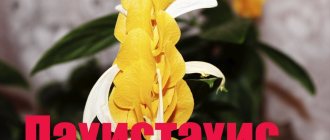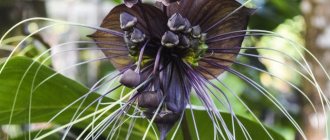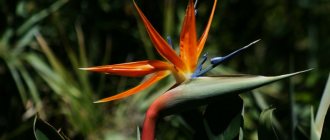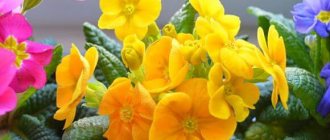Plants » Flowers
0
1225
Article rating
Kira Stoletova
Proper watering of Zamioculcas is the key to its beauty and health. This flower comes from the hot African continent, so it tolerates dryness better than excess humidity. For successful growing, you need to strike a balance and take into account the seasons, hydrating the plant as needed.
Watering Zamioculcas - rules and recommendations
The importance of proper watering of Zamioculcas
Growing in natural conditions, plants absorb moisture during precipitation. When grown in an apartment, only a person can provide them with moisture.
Houseplants need water to:
- feed the roots with the necessary nutrients from the soil and air, dissolving and transporting them;
- participate in the construction of cells and tissues;
- take part in the synthesis of organic matter;
- protect from overheating and hypothermia.
The plant is 80–95% water.
Its deficiency provokes the development of various problems - yellowing and wilting of leaves, lethargy of shoots, shedding of unopened buds and, ultimately, the death of the plant. But water can also cause harm to the flower - causing burns and rot. In order to avoid problems, you need to learn how to water the plant correctly. Did you know? Due to its external resemblance to the Crassula, Zamioculcas is popularly called the dollar tree. Superstition says that, unlike the money tree, this plant attracts not just money to the family, but exclusively dollars.
Watering after transplanting
Zamioculcas after transplantation is watered no earlier than a week or 10 days later, since the plant needs to get used to new conditions and stand in new soil and pot. It is strictly forbidden to water immediately, as the plant may die.
After adaptation, moderate watering begins with a gradual increase in the amount of water. This indoor pet generally reacts negatively to excessive watering, so when replanting, you need to pour a sufficient layer of expanded clay onto the bottom of the pot, make several drainage holes in the bottom itself, and place the pot itself on a plate or tray.
To water Zamioculcas correctly, you need to remember a few simple recommendations. Pay attention to the condition of the soil, room temperature and season.
How often to water a dollar tree
Zamioculcas prefers moderate watering from spring to autumn. Water the plant at the moment when the top soil layer dries out. In winter, the number of moisturizers should be reduced to a minimum. The soil surface should dry well between waterings. The flower does not respond well to excess moisture. With frequent and excessive moisture, its roots and stem can rot.
Water regime in the homeland of the dollar tree
Zamioculcas is a flowering herbaceous plant, a perennial succulent of the Aronicaceae (Araceae) family. The unique single representative of the genus became popular as a potted plant in the 90s of the 20th century.
Natural habitat: mountain plateaus, dry steppes, lowland shaded forests, open meadows and pastures. The tropical climate with seasonal changes in heat, drought and frequent heavy rains hardened the plant.
The structural features of the succulent are large modified tuber stems, powerful root shoots and fleshy leaves with swollen cuttings at the base. During periods of high humidity, vegetative parts and rhizome tubers store water and starchy substances. In the heat, the reserve is gradually consumed, and Zamioculcas continues to grow its rhizome.
In the long, hot summer, the flower sheds its leaves, like a deciduous plant - this is a natural way to protect the roots from drying out. As soon as the rains begin, the southern exotic again produces feathery branch-leaves.
The dark green small leaves themselves are dense, with thick skin and can withstand open sun , retard moisture evaporation, and economically use up nutritional reserves.
What water to use
To water indoor plants, use rain, melted water, filtered water, or water that has been standing for at least 12 hours (preferably 1–2 days) at room temperature. It is strictly forbidden to moisten flowers with cold, hard water. This negatively affects their condition and beauty, and also shortens their lifespan. It is possible to water with tap water after boiling. Since a huge part of the valuable elements disappears after this procedure, it is necessary to add vinegar (1 tsp / 1 l) or citric acid (5 crystals / 1 l) to it. It is recommended to water with this mixture no more than once every 30 days.
Did you know? Flower growers claim that a dollar tree attracts money to the house only if it is not purchased independently, but as a gift. In the house it should be grown in the wealth zone - in the southeastern part.
Excess moisture
Overmoistening of the soil negatively affects the health of the flower and can lead to its death.
The main danger is root rot: light red spots appear on the leaves, the stems darken, soften and become thinner; the plant withers and slows down in growth. But these are only external signs of the main problem - rotting roots.
Treatment at home
At the first signs of illness, water procedures should be stopped immediately. It is better to replant the plant by removing damaged leaves and rotten parts of the roots.
Before transplanting into a new substrate, they are cleaned and treated with fungicides. You can water the flower only after the soil has thoroughly dried.
Basic rules of watering
The basic rules for moistening zamioculcas are as follows:
- Do not over-moisten.
- Water infrequently, but abundantly.
- Make sure that drops do not fall on the stems and leaves.
- In summer, watering should be done in the evening, and in winter - in the morning.
- Moisturizing should be regular.
- There must be drainage at the bottom of the pot to prevent moisture stagnation.
- If a flower grows in a ceramic pot, it will need more moisture than a flower planted in a plastic container. Plastic retains moisture better.
- More moisture for indoor culture will be required at high air temperatures, low humidity, dense soil and intense light.
- Plants that are in the active growth phase and during the flowering period need to be watered more often.
Features of the procedure
After transplant
There is a rule - Zamioculcas should not be watered after transplantation. However, much depends on the substrate into which the succulent is transplanted.
If the soil mixture is completely dry, watering is done during the replanting process. And the next one - only after 7-10 days, making sure with a stick that the earth has dried out enough.
If the transplant is carried out in moist soil, the flower is not watered. After 3-4 days, Zamioculcas is carefully moistened and the water is immediately drained from the pan. In this case, they focus on the condition of the substrate: if you are not completely sure, it is better to postpone the procedure for another day.
In summer
Watering is carried out as the soil dries out
In the warm season, moisture from the soil evaporates quickly, so watering is carried out more often. Starting in spring, the frequency of procedures gradually increases: first - once every two weeks, and then - every 10-7 days. In this case, the condition of the soil must be checked with a stick, taking into account the real needs of Zamioculcas.
In very hot summers, you can water more often, provided that the substrate dries up to half the pot. Atmospheric humidity is not very important for the plant itself, but it does affect the rate of evaporation from the ground. So, in dry air, the top layer dries quickly, but the bottom layer still remains wet. In this case, you cannot focus on surface dryness - additional watering will lead to waterlogging of the roots and the risk of disease. To avoid confusion, it is better to maintain indoor humidity within normal limits.
in winter
Starting in the fall, the number of procedures is gradually reduced. During the winter dormancy period, they are carried out once every 3-5 weeks. At the same time, they still check the condition of the soil with a stick.
In cold weather, water temperature becomes an important condition. It should not be too warm, but slightly above room temperature. No fertilizing is carried out in the autumn-winter months. Heating devices can cause excessive dryness in the room, so you need to monitor the humidity level. It is recommended to humidify the air from a spray bottle and ventilate, but do not expose Zamioculcas to the danger of drafts.
How to water Zamioculcas at home
The moisture regime will differ depending on the time of year and the growth phase of the flower.
in winter
In winter, the flower needs to be watered approximately once every 3-4 weeks. The owner needs to monitor the condition of the top soil layer. After it has completely dried, you need to wait a few more days and only then carry out the next moistening.
In summer
In summer, watering should be infrequent but plentiful.
You can water Zamioculcas in 2 ways:
- top or classic;
- bottom, into the pallet.
Important! In case of short-term absence, the pots can be placed in a large plastic container with wet wipes and paper or a low level of water.
When moistening at the root, the frequency of watering is determined by the owner based on the condition of the soil - its top layer should dry out 2 cm deep. The exact number of days between waterings will depend on the temperature and humidity, light intensity, age and size of the flower, and soil composition. For example, if the weather is cloudy outside for a long time, then you will need to water less often. In the heat, the number and volume of moisture increases.
If it is difficult for a person to determine whether the soil is sufficiently moistened, you can stick a stick or finger into the ground. If the layer below is wet, it means the soil is sufficiently moistened. Watering at the root is carried out with a watering can with a thin spout to avoid dripping on the trunk and leaves. This will prevent sunburn.
When watering into a tray, proceed as follows:
- Pour water into the pan.
- After 15–20 minutes, drain off the remainder.
- Lightly water the top soil layer.
- After 15 minutes, pour water into the pan again.
- After 10–15 minutes, drain off the remainder.
This method of watering is preferable for zamioculcas, since with it the plant can independently regulate the amount of moisture it needs.
It is imperative to drain the leftovers. Otherwise, the roots may rot. Important! Zamioculcas organs contain poisonous juice. It is not recommended to keep it in a home where there are small children and pets.
Irrigation technology
- The flower is watered from above, strictly at the root, using a watering can with a narrow spout. In this case, moisture should not fall on the leaves of the plant.
- The substrate in the flowerpot should be loose with good drainage, so water will quickly pass through the soil and fill the pan. It should be left in this position for 15 minutes.
- During the winter procedure, the remains are simply drained after 15 minutes; during the summer procedure, they are poured into the pot again, and when the water flows into the lower container, they are immediately poured out.
Combining fertilizing with watering
From mid-spring to late summer, the flower needs to be fed. 2 feedings are needed per month. Ready-made fertilizers designed for succulents and cacti are suitable for Zamioculcas. It is recommended to reduce the indicated dosage on the package by 2 times. Fertilizer application must be combined with moisture.
The flower can also be fed by alternating organic and mineral fertilizers. Once a month, you can apply foliar feeding with urea or complex mineral bait. In autumn and winter, the flower does not need feeding.
How to care for Zamioculcas after purchase
Once you have it in your home, place it out of direct sunlight on a moderately lit windowsill or close to a window. It is better not to touch the zamioculcas at all for a week so that it gets used to the microclimate.
When purchasing from a local nursery, it is advisable to postpone the transplant for 1-2 months. If the flower feels good without replanting, then it is better to postpone it altogether until next spring.
When importing a plant from abroad, it is necessary to replant it within a week: the soil in which it is transported is unsuitable for long-term cultivation. It is most convenient to cut the flower pots when replanting to avoid damaging the roots.
Plants are often brought to us from the Netherlands. And even if you bought a buck tree at a local store, it is better to ask the seller where the nursery is located.
Daria Sumarokova, florist with 8 years of experience, author of the website “Flower, Grow”
For the first time, we water the flower only after two weeks, starting to spray it carefully. The plant could be injured and damaged, and it is necessary that all wounds have time to heal. If you decide to transplant zamioculcas, you can water it immediately.
The dangers of improper watering
Zamioculcas can tolerate irregular watering and drought for a long time. But it does not tolerate waterlogging well.
If the plant lacks moisture or has too much moisture, it will inform the owner about this by changes in appearance:
- Softening and yellowing of leaves. This change indicates that the plant is watered too often and abundantly. It is necessary to reduce the volume and increase the intervals between waterings.
- Drying of the tips of the leaves. This may be a symptom of indoor air that is too dry. The plant needs to be regularly sprayed and the leaves wiped with a damp cloth.
- Yellowing and drying of foliage. Most likely, the plant does not have enough moisture. You need to water it more often or more abundantly.
- Rotting of the stem and tuber. Rot settles on the plant due to excessive watering and cold temperatures. If it is insignificant, then you can cut out the rotten area and treat the cut area with crushed charcoal, and then transplant the flower into a new pot and soil. In case of severe rotting, it will be necessary to rejuvenate the plant by propagating it with leaves or cuttings. You will have to say goodbye to the mother flower; it will not be possible to resuscitate it.
Find out how and how long Zamioculcas blooms at home.
Despite the fact that Zamioculcas grows well with minimal care, watering is needed for its stable growth, proper development and maximum decorativeness. Before you start such a flower in your home, you need to familiarize yourself with the recommendations on the method, frequency and volume of moisture, and strictly adhere to them.
Watering frequency
Controlling soil moisture and frequency of watering are an important part of plant care. In its natural habitat, Zamioculcas grows in desert areas, so it is accustomed to prolonged dry weather. And a caring gardener should take this nuance into account when growing a flower at home.
The main condition for watering a flower is not to do it too often. The root system of Zamioculcas is represented by a large tuber and numerous shoots. They absorb the required amount of moisture and then use it up as they grow. Therefore, watering should be done rarely, but with plenty of water.
How many times a week should I water Zamioculcas? It is quite difficult to clearly answer this question; it is recommended to focus on the condition of the earth, checking it with a wooden stick. In spring and summer, the soil should dry out slightly. If, after checking, doubt arises whether it is already standing or not yet, then there is simple advice - you need to wait another day and then water it.
Consequences of waterlogging
The flower tolerates prolonged drought better than overwatering. The following symptoms indicate excess moisture:
- the appearance of red spots on the leaves of the plant;
- signs of stem rotting;
- Root rotting.
If measures are not taken to save Zamioculcas, this tropical resident will die. To provide emergency assistance, they resort to the following operations:
- Reduce soil watering.
- Do not moisten the flower longer than usual.
- In advanced cases, it is necessary to transplant into another substrate.
Watering: methods
We have already figured out how often to water Zamioculcas above; now we need to figure out how to water it so that the watering is of high quality. Florists distinguish two ways to water a dollar tree:
- The first option: water the soil from a watering can generously and evenly. After this, you need to wait until the water drains into the pan and drain it for an hour until it stops appearing there.
- The second option: pour water into the tray for 10-15 minutes, then drain the remaining water, and water the soil evenly from a watering can. If water appears in the pan, it should also be removed.
Spring-summer period
Zamioculcas is watered more often in the warm season than in winter, because the ambient temperature is higher and the humidity is low. In this case, the soil in the pot should dry out at least half. If the room is cool, watering is carried out when the soil is completely dry.
If watering is not done on time, then the lack of moisture will be reflected primarily on the apical leaves - they will gradually begin to dry out. But after watering, the plant will look healthy again.
There is no need to spray or moisten the leaves of Zamioculcas even on the hottest days; you only need to occasionally remove dust from the leaves to maintain their glossy appearance.
You may be interested in:Structure of an orchid: parts of the plant, description, photo
In summer, the dollar tree can be taken to a balcony or open terrace, but not placed in direct sunlight to prevent burns on the leaves.
Reproduction of Zamioculcas
Zamioculcas is one of the few plants that can be propagated using leaves. Reproduction by dividing the bush is also allowed.
Reproduction of Zamioculcas by leaves
Zamioculcas is not a cheap plant; in the store it costs from 500 to 2000 rubles. Therefore, if you want to save money, you can grow it yourself.
How to grow a dollar tree from a leaf, see also in this video:
Planting a dry leaf
When using this method, roots appear within a month, after which nodules begin to form. Before planting the leaves in the soil, it is necessary that they dry out a little at the cut points. This is done to prevent the plants from rotting.
Sprinkle the prepared soil with perlite into plastic cups; you don’t have to water it; We plant the leaves broken off from the plant into the ground not very deep.
Don't worry if the leaf turns yellow. He just spent all his energy on forming the tuber.
Planting a leaf after keeping it in a glass of water
Place any leaf in a glass of water, and when it gives roots, plant it in the ground.
Rare watering should be observed to prevent the roots from rotting.
Propagation by leaf cuttings
We cut off the cutting with two leaves and plant it shallowly in the ground, after which we sprinkle a little soil on top of the place where the outer part of the cutting sticks out.
If we plant in soil recently unpacked from a bag, we don’t need to water it. If we plant it in dry conditions, then lightly moisten it. Slightly!
Reproduction by dividing the bush
- take the flower out of the pot;
- free from the substrate and separate the roots, trying not to damage them;
- cut off the damaged roots and treat the cut areas with powdered activated carbon;
- dry for 2-3 hours;
- We plant the separated plants in pots.
We leave new castles without watering for at least three days.
We divide the tubers and place them in different pots
Problems with the plant due to improper watering
It is not for nothing that watering zamioculcas is considered the most important aspect in caring for the plant. Violation of the watering regime is the main reason for the poor condition of the succulent. Moreover, the appearance and health of the flower can deteriorate both due to a lack of moisture and due to its excess.
Overdried plants will show themselves with brown leaf tips. If watering is not restored, the leaves will dry out and fall off - the zamioculcas will enter an unexpected dormant stage. This can lead to another problem - an overdried flower can be attacked by various pests, in particular spider mites. The unpleasant situation is exacerbated by dry environmental air. Humidifying the air around the flower slows down the damage.
Excessive watering for a flower is also undesirable. In this case, fungal diseases actively develop. Waterlogged conditions activate root and stem rot. Excess moisture is especially dangerous for a plant that is located in a room with a low temperature. Rotting of the root system and tubers in such conditions occurs very quickly, and in this case it is very difficult to save the flower.
When a flower is over-watered, the young leaves begin to turn yellow first. In order to save the dollar tree, you need to limit watering and monitor it.
If the foliage has stopped turning yellow, it means that the root system was slightly damaged, rotten areas have not yet appeared, or were very small, and the plant itself dealt with them. In this case, the soil needs to be thoroughly dried, the next watering should be very scanty, you can add Fundazol to the water.
If this stage has already been missed, and the petioles of the plant have begun to wobble in the soil, it means that the root system of the plant has been seriously damaged by rot. In this case, an emergency flower transplant is required, during which the degree of the disease is determined.
If the outbreak is small, you need to remove all rotten roots, remove rotten areas from the tuber, treat with Fundazol and leave to dry. After this, all fresh wounds should be sprinkled with activated carbon or any other antiseptic, and the plant should be planted in new soil. At first after transplantation, there is no need to water it, then watering is carried out in small portions until the flower is completely restored.
If a flower develops extensive foci of decay, it will not be possible to save it; the zamioculcas will have to be thrown away. You can try to save the upper parts of the leaves that are not affected by rot, root them, following all the rules, and get several new plants.
Diseases and pests
Zamioculcas has good health and is rarely affected by pests. However, as a preventative measure after purchase, it can be treated with Fitoverm and Bitoxibacillin.
Root rotting
The reasons are cold, excessive watering, using the wrong water during irrigation, and water not draining from the pan.
To save the plant, you need to free the roots from the soil and get rid of the rotten ones, then disinfect them in warm water with potassium permanganate, dry them and sprinkle them with activated carbon powder. After this, zamioculcas can be transplanted into fresh soil.
Yellowing of leaves
This is a natural process. However, if new leaves do not grow after yellowing and falling, the plant may not have enough fertilizer or water.
Try to adjust the growing conditions and also use growth stimulants to solve the problem. “Agricola”, “Pokon” and “Uniflor-rost” are suitable for Zamioculcas.
Another reason for yellowing is drafts and temperature changes. In this case, remove the flower from the window and keep it away from radiators.
Yellowing leaves may indicate root rot due to overwatering. The roots must be trimmed and dried, and then planted in fresh soil.
Aphid
Black, green and gray insects are located on the back of leaves and suck the sap from plants. Spraying with special preparations will help: Fitoverm, Actellik, Aktara.
Spider mite
A red spider that can be easily spotted by its white web. It also feeds on plant sap. A warm shower will help get rid of most adult insects; special attention should be paid to the back of the leaves.
Or you can spray the plant with a spray bottle. Mites really don't like moisture.
Then the plant must be treated with insecticides: Flumite, Omite, Actellik. They will help get rid of larvae and eggs and prevent the reappearance of parasites.
Cobwebs can be found on both roots and leaves
Shchitovka
Externally they look like small rounded tubercles of yellow, brown or green color on the outer and inner sides of the leaves.
The danger of scale insects is that because of them the plant sheds its leaves and stops growing. They are easy to remove with soapy water. However, it does not give 100% results.
Therefore, it is better to use specialized chemicals: “Aktellik”, “Aktara”. To achieve maximum effect, the plant must be covered with a plastic bag for a day, and then rinsed under a warm shower. Be careful not to let harmful substances get into the soil.
There is also a universal folk remedy for pest control. 1 tbsp. Infuse tobacco in warm water, add soap and spray the leaves with the resulting substance. Leave for a day, then rinse them with clean water.
Carefully change the soil at a “safe” time
Zamioculcas need to be replanted very carefully. And it is advisable not to be alone, so that there is someone to carefully hold the luxurious leaves and make sure there are no injuries. The roots should be handled very carefully, maintaining their usual shallow planting. It is better not to destroy the earthen lump.
A special substrate for succulents - light, loose, with perlite or other components that prevent compaction over time - is poured gradually, without compacting too much. If the plant is unstable, you must immediately provide support. And you should not rush to water the transplanted zamioculcas right away: careful watering is carried out only the next day, and if the planting substrate is wet, then after 2-3 days.
To avoid problems, it is better to limit the time of replanting for this plant to the first half of spring, March-April. The size of the container should be only slightly larger than the previous ones, but proportionate to the roots. An increase of 2-3 cm is ideal. It is worth checking the quality of the drainage holes and not skimping on drainage, the height of which should be up to ⅓ of the height of the pot (minimum 5 cm).
Zamioculcas need to be replanted very carefully











